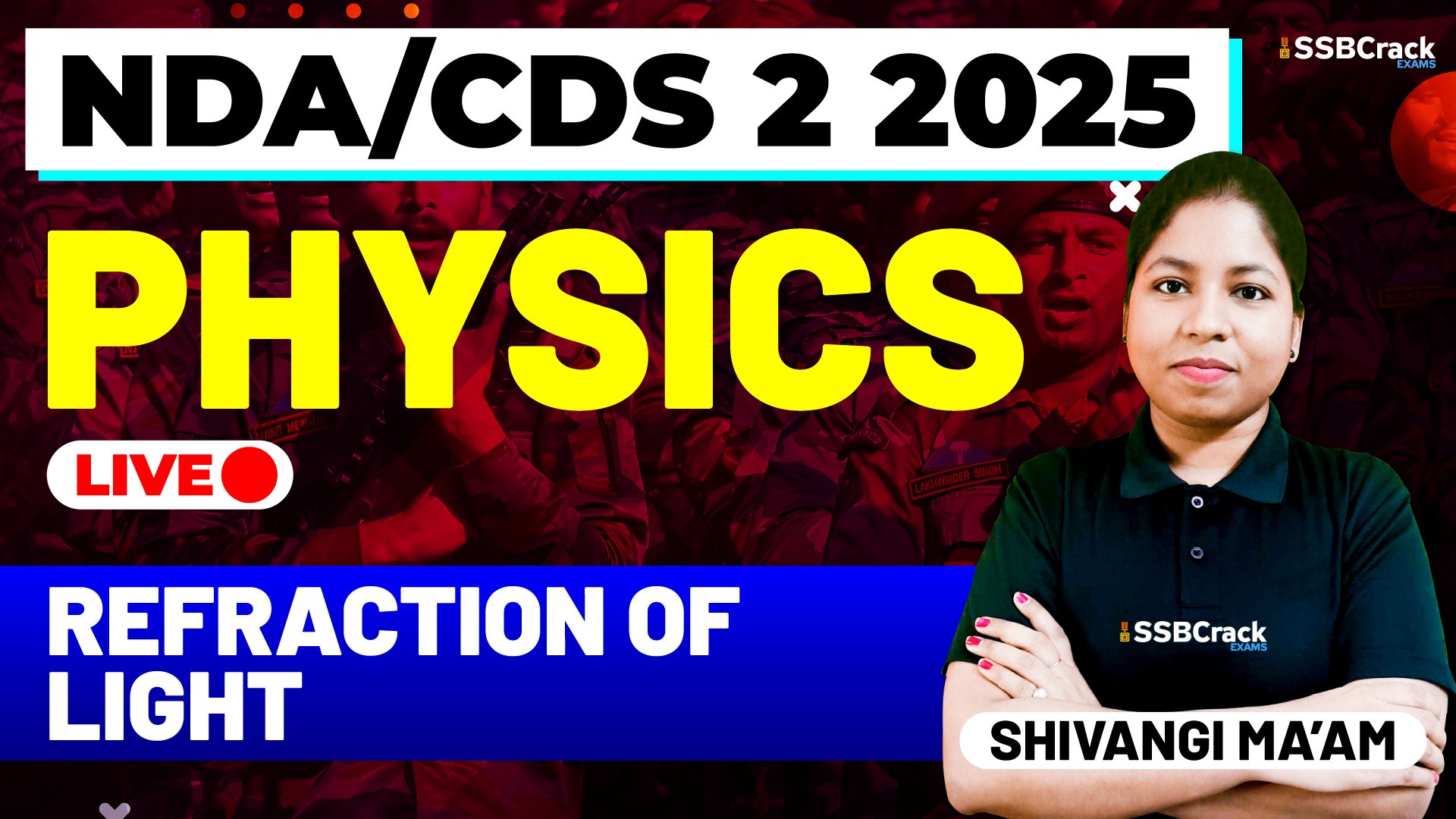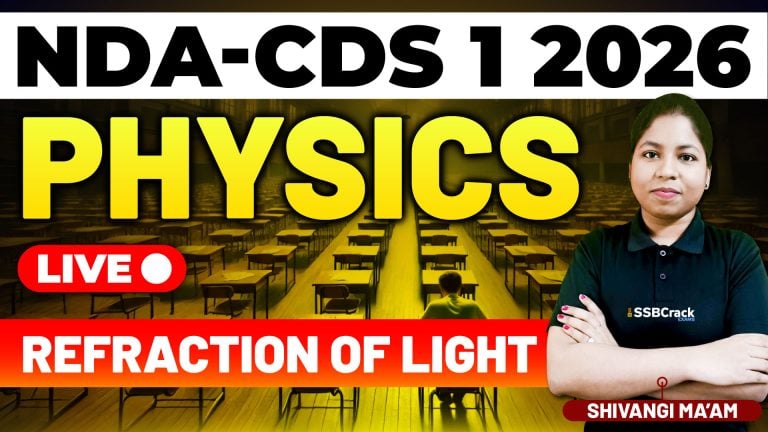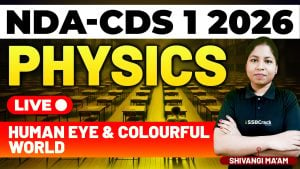Introduction
Refraction of light is one of the foundational topics in optics and plays a crucial role in the NDA and CDS Physics syllabus. In today’s class, we delved into this essential concept, focusing on the Laws of Refraction, the behavior of concave and convex lenses, and the phenomenon of Total Internal Reflection (TIR). With a mix of theory and real-life applications, this session aimed to strengthen conceptual understanding and sharpen problem-solving skills—an approach that aligns perfectly with the demands of competitive exams like NDA and CDS.
The Laws of Refraction: Understanding the Basics
We began the class by revisiting the two fundamental Laws of Refraction:
- The Incident Ray, the Refracted Ray, and the Normal to the surface all lie in the same plane.
- Snell’s Law, which states: sinisinr=μ\frac{\sin i}{\sin r} = \musinrsini=μ where i is the angle of incidence, r is the angle of refraction, and μ is the refractive index of the second medium relative to the first.
These laws form the bedrock for analyzing how light bends as it passes through different media. We discussed various examples, including how a pencil appears bent when partially submerged in water, illustrating the change in speed and direction of light.
Concave and Convex Lenses: Applications and Behavior
Next, we explored lenses, focusing on the two primary types: convex (converging) and concave (diverging) lenses. Key takeaways from this section included:
- Convex lenses converge parallel rays to a focal point. They are used in magnifying glasses, cameras, and the human eye (natural lens).
- Concave lenses diverge incoming parallel rays. These are used in devices like peepholes and to correct myopia.
Students were introduced to the lens formula and ray diagrams, emphasizing their importance in solving numerical problems.
Total Internal Reflection: A Fascinating Phenomenon
One of the most exciting parts of the session was understanding Total Internal Reflection (TIR)—a phenomenon where light reflects entirely back into a medium instead of refracting, provided:
- Light is traveling from a denser to a rarer medium.
- The angle of incidence is greater than the critical angle.
Real-world applications like optical fibers, diamond sparkle, and mirage formation were discussed to link theory with practical utility. Diagrams and demonstrations helped illustrate how and why TIR occurs.
Conclusion
Today’s class on Refraction of Light covered critical concepts that form the backbone of optics in the NDA and CDS Physics curriculum. Understanding how light behaves at boundaries, interacts with lenses, and reflects under specific conditions equips students with both conceptual clarity and analytical skills. As the 2025 exams approach, mastering such topics not only boosts confidence but also builds a strong foundation for more advanced chapters to come.



















